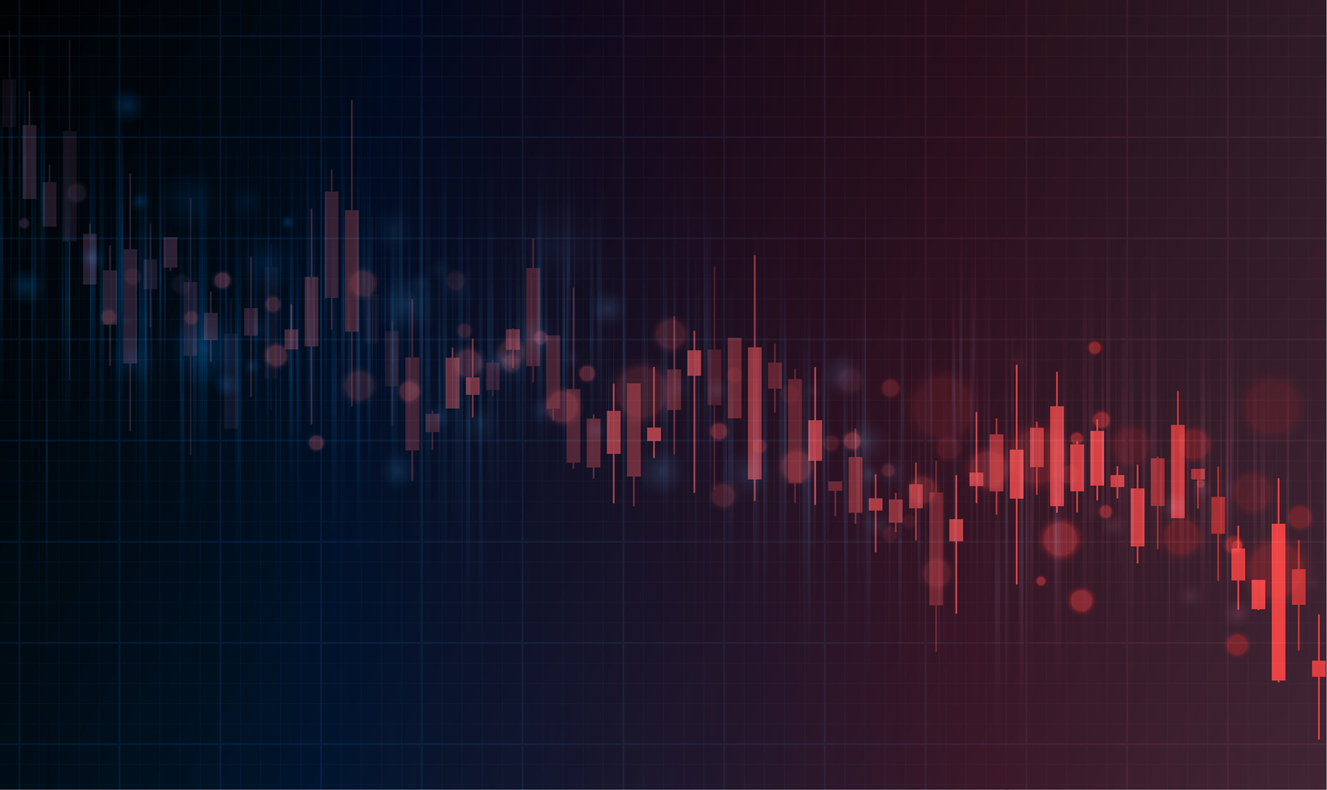The head and shoulders pattern is one of these analysis tools.
However, why is it valuable, how can you recognise it, and how can you use it to inform your trading?
What is the Head and Shoulders Pattern?
The head and shoulders pattern, sometimes called a head and shoulders chart or head and shoulder chart pattern, is a useful visual tool for traders.
It can be an indication that a bullish market is about to take a significant downturn, and as such can be one of many pieces of data you might use to inform your trading plan.
The pattern is so named because in its simplest form, it resembles a head and two shoulders.
You may also hear it called a three peaks pattern, and it’s also similar to a triple top, although this pattern tends to be three peaks of similar heights rather than having the call centre peak.
In a head and shoulders pattern you can see the market go through three clear stages:
- In stage one we see the market rising towards a new peak, and then falling back towards a baseline, often known as the neckline. This first peak is the left shoulder.
- We then see the market rise for a second time, this time higher than the first peak, before dropping back to the neckline. This is the head.
- Finally, the market rises for a third time to form the right shoulder, before falling again.
Once the market has hit this third peak and breaks below the neckline, it’s considered to signal the beginning of a more significant downturn, and so it’s incredibly valuable to traders to be able to identify this pattern.
Of course, the head and shoulders pattern isn’t always so clear cut and it may form over any period, so you’ll need to analyse the data carefully to potentially spot it.
It’s important to remember that the head and shoulders pattern is by no means a guarantee – it should be used in conjuction with other technical analysis tools to assess market movements and make trading decisions.
What Is the Inverse Head and Shoulders Pattern?
The inverse head and shoulders pattern takes the original head and shoulders chart, and turns it upside down, and can be a sign that a market is set for a bullish reversal.
The head and shoulders pattern inverse chart follows the same three stages, but in reverse:
- First, you see an initial downturn, followed by recovery to what’s often called the resistance line
- A second and more significant downturn follows, with the market again recovering to the resistance line
- Finally, we see a third downturn, followed by an upward trend with the market rising past the resistance line and beyond
How to Trade Using the Head and Shoulders Pattern
To trade using the head and shoulders pattern, you will need to take your decision-making through several stages. This applies to head and shoulder stock traders, head and shoulder forex trades, or any other treades made with the same pattern in mind.
Identify the pattern
Once you spot the distinctive three peaks, draw a neckline by connecting the lows of the left shoulder and the right shoulder.
Confirm the pattern by observing the volume trends – volume should generally decrease as the pattern forms, and then increase when the price drops back below the neckline.
Consider your entry point
Many people enter a trade when the price comes back down the neckline after the third peak as this breakdown is seen as strong confirmation of a potential trend reversal.
However, it’s essential to wait for a convincing price close below the neckline before you trade head and shoulders.
Set stop loss and target levels
Common risk management practice for head and shoulders pattern is to place a stop loss order slightly above the right shoulder.
This level acts as a safety net in case the pattern’s reversal signal fails.
You can calculate your potential target level by taking the vertical distance between the head and neckline, and extrapolating down from the point where the price hits the neckline.
Seek additional information
Before entering your trade, it’s always wise to look for validation from other technical indicators or chart patterns.
Look for corroborating signals from tools like moving averages or trendlines – your chances of success are higher when multiple signals align.
Consider timeframes
Patience is key with trading head and shoulders, so don’t rush into anything – wait for the pattern to fully develop, and the breakout to occur before you make your move.
Keep in mind that the effectiveness of the head and shoulders pattern can vary across different timeframes – patterns on longer timeframes – i.e daily or weekly – are generally considered more reliable than those on shorter timeframes.
Start trading with INFINOX
Like any trading strategy, trading the head and shoulders pattern requires practice and experience, and there are no guarantees.
Studying historical charts to identify patterns can be a way to see how markets can play out, but remember the past and the future are not one and the same – everything in finance is affected by multiple and different variables.
Virtual trading or paper trading can help you gain confidence without risking real capital.
If you’re interested in trading using the head and shoulders pattern, it’s easy to get set up an INFINOX account. Simply head to our website to begin your registration process.
INFINOX is your local broker with a global presence, meaning you benefit from the reliability and security of a world-leading brand, but with client-first attention to detail and customer service.
Our trading platforms are supported by extensive research and learning material – so if you’re new to trading using the head and shoulders pattern, or want a better understanding of trading generally, you will have access to up to the minute news and resources to support your learning.
This material is for general information purposes only and is not intended as (and should not be considered to be) financial, investment or other advice on which reliance should be placed. INFINOX is not authorised to provide investment advice. No opinion given in the material constitutes a recommendation by INFINOX or the author that any particular investment, security, transaction or investment strategy is suitable for any specific person.
All trading carries risk.















